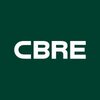

Parul University




10+ Parul University Interview Questions and Answers
Q1. What is the full form of ITC in the context of indirect tax?
Input Tax Credit
ITC stands for Input Tax Credit in the context of indirect tax
It allows businesses to reduce the tax they have already paid on inputs from the tax they have to pay on outputs
Example: If a business pays GST on raw materials, they can claim ITC to reduce the GST they owe on their final product

Q2. How many Returns are required for Goods and Services Tax (GST) and what are the filing dates?
For GST, there are multiple returns required with different filing dates.
There are different types of GST returns such as GSTR-1, GSTR-3B, GSTR-4, etc.
The filing dates for these returns vary based on the type of return and the turnover of the taxpayer.
For example, GSTR-1 for monthly filers is due on the 10th of the following month, while GSTR-3B is due on the 20th of the following month.
Taxpayers with turnover above a certain threshold also need to file an annual return calle...read more

Q3. Explain linked list briefly and their types Explain about queue and stack Explain binary tree with the help of example What is the real time use of Linked list Explain the sorting techniques with the help of ex...
read moreA linked list is a data structure that consists of a sequence of nodes, where each node contains data and a reference to the next node.
Types of linked lists include singly linked list, doubly linked list, and circular linked list.
A queue is a data structure that follows the FIFO (First-In-First-Out) principle, while a stack follows the LIFO (Last-In-First-Out) principle.
A binary tree is a hierarchical data structure where each node has at most two children, referred to as the...read more

Q4. What are the different types of taxes in India?
There are various types of taxes in India including income tax, goods and services tax (GST), corporate tax, customs duty, and excise duty.
Income Tax: Tax levied on the income of individuals and businesses.
Goods and Services Tax (GST): Indirect tax levied on the supply of goods and services.
Corporate Tax: Tax levied on the income of companies.
Customs Duty: Tax imposed on goods imported into or exported out of the country.
Excise Duty: Tax levied on the production or sale of go...read more

Q5. What is payroll, and what are its key components?
Payroll is the process of calculating and distributing wages to employees.
Calculating employee wages based on hours worked or salary
Deducting taxes and other withholdings
Issuing paychecks or direct deposits
Maintaining accurate records of employee compensation
Key components include gross pay, deductions, net pay, and payroll taxes

Q6. What is the process of bank reconciliation?
Bank reconciliation is the process of comparing and matching the balances in a company's accounting records with the balances on its bank statement.
Gather bank statements and accounting records
Compare deposits and withdrawals between the two
Identify and investigate any discrepancies
Adjust the accounting records to match the bank statement
Prepare reconciliation report

Q7. What is the meaning of finance?
Finance refers to the management of money and other assets, including investing, borrowing, budgeting, and forecasting.
Finance involves managing money and assets to achieve financial goals.
It includes activities such as investing, borrowing, budgeting, and forecasting.
Finance is essential for individuals, businesses, and governments to make informed financial decisions.
Examples of finance include budgeting for personal expenses, investing in stocks, and securing loans for bus...read more

Q8. What Tools and techniques used while teaching
I use a variety of tools and techniques while teaching to enhance student learning and engagement.
Incorporating multimedia presentations to cater to different learning styles
Utilizing interactive activities such as group discussions and case studies
Implementing technology like online quizzes and educational apps
Providing hands-on experiences through experiments or simulations
Encouraging student participation through debates and presentations


Q9. What is a direct tax?
A direct tax is a tax that is paid directly by an individual or organization to the government.
Direct taxes are imposed on income, profits, assets, and wealth.
Examples of direct taxes include income tax, corporate tax, property tax, and inheritance tax.
Direct taxes are typically progressive, meaning that the tax rate increases as the taxable amount increases.

Q10. What is an indirect tax?
An indirect tax is a tax that is imposed on goods and services rather than on income or profits.
Indirect taxes are usually passed on to the consumer through higher prices.
Examples of indirect taxes include sales tax, value-added tax (VAT), and excise duty.
These taxes are collected by an intermediary, such as a retailer, and then passed on to the government.

Q11. Place of Supply
Place of Supply refers to the location where a supply of goods or services is deemed to take place for tax purposes.
Place of Supply is crucial for determining the applicable tax rate and jurisdiction for a transaction.
It is determined based on various factors such as the nature of supply, location of supplier, and location of recipient.
For example, if a service is provided in India to a customer in the US, the place of supply would be the US.
Different rules apply for goods an...read more

Q12. Time of Supply
Time of Supply refers to the point in time when goods or services are deemed to be supplied for tax purposes.
Time of Supply is important for determining when to account for GST or VAT.
For goods, time of supply is usually the date of delivery or payment, whichever is earlier.
For services, time of supply is typically the date of completion or payment, whichever is earlier.
In some cases, time of supply may be triggered by issuance of invoice or receipt of payment.
Different count...read more

Q13. Types of Cloud Computing
Cloud computing refers to the delivery of computing services over the internet.
Public Cloud: Services are delivered over the internet and shared across multiple organizations (e.g. AWS, Microsoft Azure)
Private Cloud: Services are maintained on a private network and used by a single organization (e.g. VMware, OpenStack)
Hybrid Cloud: Combination of public and private cloud services to meet specific business needs (e.g. Google Cloud Platform)
Community Cloud: Infrastructure share...read more

Q14. What is your expected CTC?
I am open to discussing the salary package based on the job responsibilities and market standards.
I am looking for a competitive salary package
I am open to negotiation based on the job responsibilities
I expect the salary to be in line with market standards
I am willing to discuss the salary package further

Q15. Define Fourier series?
Fourier series is a mathematical representation of a periodic function as a sum of sine and cosine functions.
It is named after French mathematician Joseph Fourier.
It is used to analyze and synthesize periodic functions.
It is widely used in signal processing, image processing, and other fields.
The Fourier series of a function f(x) is given by a0/2 + Σ(an*cos(nx) + bn*sin(nx)), where a0, an, and bn are constants.
The Fourier series can be used to approximate a function by trunca...read more

Q16. Process of question paper moderation
Question paper moderation involves reviewing and adjusting exam questions to ensure fairness and accuracy.
Reviewing each question for clarity and relevance
Checking for errors in grammar, spelling, and formatting
Ensuring questions align with learning objectives and difficulty level
Seeking input from subject matter experts for validation
Making necessary adjustments based on feedback
Finalizing the question paper for distribution

Q17. Types of building and classification

Q18. National Building Code part 4





Top HR Questions asked in Parul University
Interview Process at Parul University

Top Interview Questions from Similar Companies









Reviews
Interviews
Salaries
Users/Month












